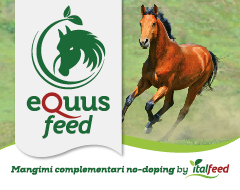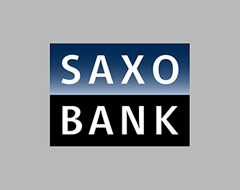|
JRA Graded Races 2012
|

2011 Winner : Orfevre
Sunday, 23 December 2012
| Distance | 2500m, Turf | /about 12.5 furlongs | |
|---|---|---|---|
| Total Value | ¥416,000,000 | /about US$5,200,000 | |
| Prize Money for the Winner | ¥200,000,000 | /about US$2,500,000 | |
| Qualification to Run | 3yo&up | ||
| Maximum number of Starters | 16 | ||
| Nomination | Tue, 6 November 2012 | free of charge |
|---|---|---|
| Declaration | Thu, 20 December 2012 | |
| Entry to Japan | from Thu, 06 Dec ’12 to Thu, 13 Dec ’12 | |
| *Payment | Fri, 14 December 2012 | ¥300,000 /about US$3,750 |
- Weight:
-
3yo 55 kg 4yo+ 57 kg - Allowance:
-
Fillies & Mares 2 kg Southern Hemisphere Bred born in 2009 2 kg -
2012 Arima Kinen (The Grand Prix) (G1) – Nominated Horse International Ratings
2012
Rating2012
CategoryHorse Name Sex &
AgeTrainer Race Place Date (Y/M/D) 123 I Rulership (JPN) H5 Katsuhiko Sumii QUEEN ELIZABETH II CUP (G1-Hong Kong) 1 2012/ 4/29 121 L Dark Shadow (JPN) H5 Noriyuki Hori JAPAN CUP (G1) 4 2012/11/25 121 I Eishin Flash (JPN) H5 Hideaki Fujiwara TENNO SHO (AUTUMN) (G1) 1 2012/10/28 120 L To the Glory (JPN) H5 Yasutoshi Ikee NIKKEI SHINSHUN HAI (G2) 1 2012/ 1/15 118 L Trailblazer (JPN) H5 Yasutoshi Ikee KYOTO KINEN (G2)
BREEDERS’ CUP TURF (G1)1
42012/ 2/12
2012/11/ 3117 E Beat Black (JPN) H5 Hitoshi Nakamura TENNO SHO (SPRING) (G1) 1 2012/ 4/29 117 E Gold Ship (JPN) C3 Naosuke Sugai KIKUKA SHO (JAPANESE ST. LEGER) (G1) 1 2012/10/21 114 E Sky Dignity (JPN) C3 Yasuo Tomomichi KIKUKA SHO (JAPANESE ST. LEGER) (G1) 2 2012/10/21 113 L Oken Bruce Lee (JPN) H7 Hidetaka Otonashi KYOTO DAISHOTEN (G2) 2 2012/10/ 8 112 L Meisho Kampaku (JPN) H5 Yoshiyuki Arakawa KYOTO DAISHOTEN (G2) 1 2012/10/ 8 112 L Nakayama Knight (JPN) C4 Yoshitaka Ninomiya SANKEI SHO ALL COMERS (G2) 1 2012/ 9/23 112 I Rose Kingdom (JPN) H5 Kojiro Hashiguchi SANKEI OSAKA HAI (G2) 4 2012/ 4/ 1 110 L Lelouch (JPN) C4 Kazuo Fujisawa COPA REPUBLICA ARGENTINA (G2) 1 2012/11/ 4 109 I-L Daiwa Falcon (JPN) H5 Hiroyuki Uehara NIKKAN SPORTS SHO NAKAYAMA KIMPAI (G3)
SANKEI SHO ALL COMERS (G2)
FUKUSHIMA KINEN (G3)2
2
12012/ 1/ 5
2012/ 9/23
2012/11/18107 I Ocean Blue (JPN) C4 Yasutoshi Ikee KINKO SHO (G2) 1 2012/12/ 1 105 E Desperado (JPN) C4 Akio Adachi SPORTS NIPPON SHO STAYERS STAKES (G2) 3 2012/12/ 1 Earnestly (JPN) H7 Shozo Sasaki Never Bouchon (JPN) H9 Masanori Ito Tanino Epaulette (JPN) H5 Akira Murayama Vertex (JPN) C3 Masato Shibata * Notes and Abbreviations
1. Weight: 1 pound = approximately 0.453 kg
2. Rating: Please add four pounds to the ratings because of weight allowances for fillies and mares, when comparing the ratings of fillies and mares to the ratings of colts, horses and geldings.
3. Abbreviations:
Gender and Sex:
C = Colt (2-4 Y/O), H = Horse (5 Y/O & UP), G = Gelding, F = Filly (2-4 Y/O), M = Mare (5 Y/O & UP)
Category (Distance):
S = Sprint (1,000m – 1,300m), S = Sprint (USA) (1,000m – 1,599m), M = Mile (1,301m – 1,899m), M = Mile (USA) (1,600m – 1,899m),
I = Intermediate (1,900m – 2,100m), L = Long (2,101m – 2,700m), E = Extended (2,701m – ), (D) = Dirt race, (T) = Turf race, (A) = Artificial Surface -
Data Analysis for the “2012 Arima Kinen (The Grand Prix) (G1)”
A festival of horseracing to thrill the Japanese nation!
Events dubbed “festivals of horseracing” are held all over the world; the Royal Ascot Meeting in England, the Longchamp Weekend in France and the Breeders’ Cup in America are a few prominent examples. These are fanfare events that grab a nation’s attention with several big races held over two or more days. Japan’s Arima Kinen is slightly different, being just a single race, but has become equally established as a special race that creates a nationwide stir. For the Arima Kinen is popular not only with racing fans, but also as a traditional year-end event for people otherwise unfamiliar with racing. Of all the top horses vying for this coveted prize in 2012, which will have its name etched in horseracing annals as the winner? This time, let’s analyze some traits shared by successful contenders in this race from results over the last 10 years.
Look for a JRA G1 win in the same year
Of 10 winners over the last 10 years, 7 had already won a JRA G1 race in the same year. Horses with this kind of experience also have excellent success ratios, with a top 3 ratio of 35.9%. As might be expected from a “Grand Prix”, we should certainly keep an eye out for runners with previous experience of winning big races in the same year. [Table 1]
[Table 1] Performance by experience of winning a JRA G1 race in the same year (last 10 years)Experience of winning Performance
[1st-2nd-3rd-4th or lower]Win ratio Top 2 ratio Top 3 ratio Yes 7-5-2-25 17.9% 30.8% 35.9% No 3-5-8-89 2.9% 7.6% 15.2% However, of these horses with previous experience of a JRA G1 win that year, the only ones to finish in the top 3 had won a JRA G1 race on turf over 2,400m or less. In other words, we may have to disregard wins in JRA G1 races on dirt or on turf over 2,500m or more. [Table 2]
[Table 2] Performance of horses with experience of winning a JRA G1 in the same year, by experience of winning on turf over 2,400m or less (last 10 years)Experience of winning Performance
[1st-2nd-3rd-4th or lower]Win ratio Top 2 ratio Top 3 ratio Yes 7-5-2-16 23.3% 40.0% 46.7% No 0-0-0-9 0% 0% 0% Look for a good performance last time out
Of 30 top 3 finishers over the last 10 years, 23 had performed well in their previous outing, finishing “in the top 5″. By contrast, horses beaten to “6th or lower” in their previous race tend to struggle, achieving a top 3 ratio of only 11.9%. This year, again, one of our first tasks might be to check which runners had a good race last time out. [Table 3]
[Table 3] Performance by finish in previous race (last 10 years)Finish in previous race Performance
[1st-2nd-3rd-4th or lower]Win ratio Top 2 ratio Top 3 ratio In the top 5 8-7-8-62 9.4% 17.6% 27.1% 6th or lower 2-3-2-52 3.4% 8.5% 11.9% Moreover, runners finishing “in the top 5″ in their previous race tend to achieve particularly excellent success ratios when that race was a “JRA or overseas G1″ race. Horses most recently finishing well in a big race, whether at home or abroad, clearly deserve a higher billing. [Table 4]
[Table 4] Performance of horses finishing “in the top 5″ in their previous race, by the condition of that race (last 10 years)Condition of previous race Performance
[1st-2nd-3rd-4th or lower]Win ratio Top 2 ratio Top 3 ratio JRA or overseas G1 8-6-6-35 14.5% 25.5% 36.4% Other races 0-1-2-27 0% 3.3% 10.0% Meanwhile, of 7 runners with top 3 finishes in this race despite finishing only “6th or lower” in their previous outing, all except 2004 runner-up Tap Dance Cityhad won a JRA graded race in either January or December. Horses with indifferent performances in their previous outing have a fighting chance of making amends, but only if they had a good result around the turn of the year. [Table 5]
[Table 5] Performance of horses finishing “6th or lower” in their previous race, by experience of winning a JRA graded race in either January or December (last 10 years)Experience of winning Performance
[1st-2nd-3rd-4th or lower]Win ratio Top 2 ratio Top 3 ratio Yes 2-2-2-21 7.4% 14.8% 22.2% No 0-1-0-31 0% 3.1% 3.1% Key points for runners coming straight from the “Japan Cup”
Of 144 horses competing in this race over the last 10 years, 68 had most recently appeared in the “Japan Cup”. This is not a particularly successful approach to the Arima Kinen, however, as their top 2 ratio and top 3 ratio are both inferior to those of runners coming from “Other races”. [Table 6]
[Table 6] Performance by previous race (last 10 years)Previous race Performance
[1st-2nd-3rd-4th or lower]Win ratio Top 2 ratio Top 3 ratio Japan Cup 6-3-3-56 8.8% 13.2% 17.6% Other races 4-7-7-58 5.3% 14.5% 23.7% In particular, horses last seen in the Japan Cup and positioned “5th or higher” at the 4th corner in that race have performed poorly, with a top 3 ratio of only 7.7%. We may need to discount horses that set an early pace in the Japan Cup. [Table 7]
[Table 7] Performance of horses last appearing in the Japan Cup, by position at the 4th corner in that race (last 10 years)Position at 4th corner in Japan Cup Performance
[1st-2nd-3rd-4th or lower]Win ratio Top 2 ratio Top 3 ratio 5th or higher 1-0-1-24 3.8% 3.8% 7.7% 6th or lower 5-3-2-32 11.9% 19.0% 23.8% Conversely, runners most recently seen in the Japan Cup and marking a final three-furlong time (estimated) “within the best 3″ in that race have achieved excellent performances in the Arima Kinen, with a top 2 ratio of 31.6%. When comparing runners coming straight from the Japan Cup, we should focus on their form in the closing stages of that race. [Table 8]
[Table 8] Performance of horses last seen in the Japan Cup, by ranking in final 3-furlong time (estimated) (last 10 years)Ranking in final 3-furlong time (estimated) in Japan Cup Performance
[1st-2nd-3rd-4th or lower]Win ratio Top 2 ratio Top 3 ratio Within best 3 4-2-0-13 21.1% 31.6% 31.6% 4th or lower 2-1-3-43 4.1% 6.1% 12.2% Younger horses dominate
Of 10 winners over the last 10 years, all except 2009 winner Dream Journey (5yo) have been “4yo or younger”. Runners aged “5yo or older” have a somewhat indifferent record, with a top 3 ratio of 15.3%. When comparing horses from different generations, our focus should be firmly on the younger ones. [Table 9]
[Table 9] Performance by age (last 10 years)Age Performance
[1st-2nd-3rd-4th or lower]Win ratio Top 2 ratio Top 3 ratio 3yo 3-4-2-31 7.5% 17.5% 22.5% 4yo 6-2-2-22 18.8% 25.0% 31.3% 4yo or younger 9-6-4-53 12.5% 20.8% 26.4% 5yo 1-2-3-27 3.0% 9.1% 18.2% 6yo 0-0-1-22 0% 0% 4.3% 7yo 0-2-1-9 0% 16.7% 25.0% 8yo 0-0-1-3 0% 0% 25.0% 5yo or older 1-4-6-61 1.4% 6.9% 15.3% Turning next to the performance by age of horses among the top 5 favorites to win, an even larger divergence appears between the success ratios of those aged “4yo or younger” and “5yo or older”, respectively. When comparing the more favored runners, we should take a particularly stern view of their age. [Table 10]
[Table 10] Performance by age of horses among the top 5 favorites to win (last 10 years)Age Performance
[1st-2nd-3rd-4th or lower]Win ratio Top 2 ratio Top 3 ratio 3yo 3-4-1-13 14.3% 33.3% 38.1% 4yo 5-1-0-6 41.7% 50.0% 50.0% 4yo or younger 8-5-1-19 24.2% 39.4% 42.4% 5yo 1-0-1-6 12.5% 12.5% 25.0% 6yo 0-0-0-7 0% 0% 0% 7yo 0-1-0-0 0% 100% 100% 8yo 0-0-0-1 0% 0% 0% 5yo or older 1-1-1-14 5.9% 11.8% 17.6% Discount horses in outer brackets?
Viewing the runners’ performance by bracket number, finally, horses in brackets “#6-#8″ have had a hard time, with a top 3 ratio of 10.0%. Actually, three horses in brackets “#6-#8″ have gone on to win the race, but all of these were backed as favorite to win. In other words, runners marked 2nd favorite or lower in the betting have fared even more poorly [0-1-2-53] (top 3 ratio 5.4%). Our expectation of horses in the outer brackets ought perhaps to be somewhat lower. [Table 11]
[Table 11] Performance by bracket number (last 10 years)Bracket number Performance
[1st-2nd-3rd-4th or lower]Win ratio Top 2 ratio Top 3 ratio #1 3-2-0-9 21.4% 35.7% 35.7% #2 1-0-3-11 6.7% 6.7% 26.7% #3 1-2-1-13 5.9% 17.6% 23.5% #4 0-3-3-13 0% 15.8% 31.6% #5 2-2-1-14 10.5% 21.1% 26.3% #1-#5 7-9-8-60 8.3% 19.0% 28.6% #6 1-0-1-18 5.0% 5.0% 10.0% #7 0-0-1-19 0% 0% 5.0% #8 2-1-0-17 10.0% 15.0% 15.0% #6-#8 3-1-2-54 5.0% 6.7% 10.0% (Data
- fonte: JRA








